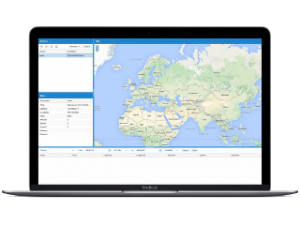
Let’s now clone the sources of the project: $ git clone
#Rpi traccar serial
# systemctl mask # Mask serial Getty service

# mount -o remount,rw / # Disable read-only rootfs However, since we want to use the UART to communicate with our GPS module we have to disable this feature: $ balena ssh balena.local One of the features of the balenaOS development image is that it attaches a Getty console to tty1 and serial (to access the shell and see the logs). For the rest of this tutorial, we connected it to a local ethernet switch with auto assigned DHCP, therefore we will use the id balena.local. What this means is that if you are connected to the same local network as the Raspberry PI, you can identify it by it’s assigned IP or by it’s id balena.local. The balenaOS image comes pre-configured as a zeroconf mDNS endpoint. Make sure you follow the installation instructions before continuing. We will be using Balena’s CLI tool to connect, push and manage the container. └─mmcblk0p1 179:1 0 40M 0 part /run/media/flashdriveĪnd finally let’s use dd: $ sudo dd if=balena.img of=/dev/mmcblk0 status=progress ├─fedora_localhost-live-swap 253:1 0 7,8G 0 lvm ├─fedora_localhost-live-root 253:0 0 70G 0 lvm / To find out the partition of your SD Card run lsblk and look for mmcblkX (where X is a number): $ lsblk
#Rpi traccar how to
Next we are going to explain how to flash the image to the SD Card using Linux command line, but if you are not familiar with Linux or if you are not comfortable using the command line you can use balenaEtcher, a well-known GUI tool for flashing images onto SD cards. We are going to use the development version, which enables passwordless login and a special local development mode that allows us to push new changes and test them live (you will understand what I mean later on). There are two different flavours for each target board: development and production.
#Rpi traccar download
The first step is to download balenaOS image. This setup intends to be an introduction to the usage of containers on an embedded Linux device while interacting with the hardware. We have also connected an LED to demonstrate how to access and control GPIOs from within the container. Hardware setupįor this project we have used a Raspberry Pi 3 Model B and a Radiolink GPS which sends NMEA sentences through UART. One of the things we like most about balenaOS is that it has been designed to make updates and SD Card operations safe thanks to the partitions’ design. The OS will launch the supervisor (the container in charge of interacting with Balena tools) and manage each of the containers deployed by the user. Bear in mind we will not use balenaCloud for this demo, which is probably the main tool of their ecosystem because it would be overkill for just one device.īalenaOS is a minimal Linux-based OS which mainly packages balenaEngine, an engine designed to run Docker-like containers. In this post we are going to demonstrate how to create a GPS tracker using balenaOS and Balena CLI. We’ve found their tools really useful so we decided to write a blog entry to explain why and how we use them. Many of them are Open Source, the Community is fairly active and the documentation is not bad (I guess that’s the best thing you can say about docs).

Balena provides many tools to manage fleets of IoT Linux-based devices. I have the idea that I cannot get the traccar server running one way or the other.Īt least when I try the traccar Port Check to port 8082 I get the message that the port is closed.At SC Robotics we’ve recently started using the Balena suite in some of our projects. I have done the port forwarding steps in the router to the IP address of the Raspberry. I have tried but no connection is established to the traccar server. I have tried with the downloads traccar-linux-arm-4.12 and with traccar-linux-64-4.12.Īfter: "sudo systemctl start traccar" nothing happens. The linux installed on the RPI is Ubuntu Desktop 20.10 64b I have a Raspberry Pi 4, 8Gb with a 32 Gb sd card. Up till inclusive the steps of extracting the traccar file and the creation of the /opt/traccar/.
#Rpi traccar Pc
However considering the power consumption of my old PC I have bought a Raspberry Pi 4 and installed Linux and traccar on it. I installed linux and downloaded traccar and everything works fine.

I have installed the traccar server on an old PC.


 0 kommentar(er)
0 kommentar(er)
